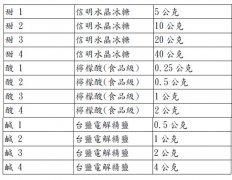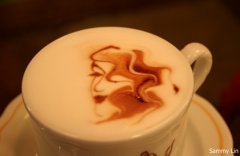What is Fairtrade Coffee?
Reprint the Financial Times: fair Trade (Fairtrade) coffee has become a familiar landscape in British supermarkets and cafes. Its motives are laudable because it guarantees a minimum price for coffee growers, and it would be ruthless to object to giving them a better price-coffee with the Fairtrade logo sold £117 million in the UK in 2007.
In November, the Starbucks coffee chain announced that by the end of 2009, all espresso sold in all coffee shops in the UK and Ireland would be Fairtrade certified.
Harry, Executive Director of the UK Fair Trade Fund (Fairtrade Foundation UK)
"Fairtrade's partnership with Starbucks is good news for growers and coffee lovers and will awaken the industry," said Harriet Lamb.
But in the coffee industry, there are still many people who are convinced that Fairtrade has failed to solve growers' problems. The crux of the problem is that by selling coffee under a fair trade model, growers face risks in distant commodity markets. A Fairtrade contract guarantees the grower's income at least the minimum price set by the International Fair Trade labelling Organization (Fairtrade Labelling Organisations International). If the market price is higher than the guaranteed price, growers will get a higher price, plus a 10-cent premium on Fairtrade coffee.
It is not surprising that coffee growers are good at the market; small growers listen to the latest news on hand radios, while for big farmers, BlackBerrys are ubiquitous, just like anywhere else in the business world.
Above the DR Wakefield & Co office in Southwark, south London, two high-hanging screens show the latest developments on the New York and London exchanges. The company is the leading importer of Fairtrade coffee in the UK, and Managing Director Simon Wakefield (Simon Wakefield) grew up in a family business.
He visited his first coffee plantation at the age of six and was proud of Fairtrade coffee's rise from a humble product to the mainstream market.
Fairtrade is not the only label on the market. Other "certified coffee" are organically grown coffee and beans certified by the Rainforest Alliance (Rainforest Alliance), a program designed to protect the environment.
Sales of certified coffee now account for 70 per cent of DR Wakefield's turnover. DR Wakefield believes that disadvantaged farmers can benefit from the Fairtrade premium, and there is a lot of sporadic evidence in favor of the plan.
But Wakefield took the market report and said, "wouldn't it be nice if some news about coffee affected the coffee market?" The volatility of commodity markets has always been a check on the Fairtrade label.
Some coffee experts believe that coffee drinkers must be educated in the future. We are used to buying Fairtrade coffee because it is the "right" thing to do without considering the quality. The next step may be to encourage us to buy and taste coffee, just as we buy red wine-find specific planting sites and growers, and learn to taste the differences.
The idea will help create a better and more sustainable business model for growers, encourage them to provide quality coffee and build supply chains to generate premiums and avoid uncertainty in commodity markets.
One of the leaders of this new business model is a former commodities trader. Stephen Hearst (Stephen Hurst) was executive head of coffee trading at Goldman Sachs for 11 years. He left the commodity market by setting up Mercanta, a coffee import company, in 1996. "I check the price once a day," he said. "because it helps me to grasp the lowest possible price for the manufacturer."
Mercanta's goal is to provide professional coffee roasters with coffee beans obtained directly from growers. What he trades is the top 2% to 3% of coffee production, emphasizing the long-term purchasing relationship-and crucially-the price paid is linked to the quality of the product. Last year, taking into account the origin, grade and variety of coffee, the average price paid by Mercanta exceeded the Fairtrade price baseline by 20 per cent.
Hirst is an enthusiastic advocate of the "perfect cup of coffee" ("Cup of Excellence") competition. The competition began in 1999 and is currently held in nine coffee-producing countries from Brazil to Rwanda.
Growers submit their best products to be tasted by an international professional jury (technically referred to as "cup test"). The winning product is then auctioned on the Internet, where the price will be very high (usually more than 10 times the guaranteed price of fair trade-the top product auctioned in Guatemala in 2008, sold at 75 times the price of the commodity market at that time).
"this is definitely the top of the pyramid of premium coffee," Hirst said. He was the president of the competition, and five of Mercanta's eight employees were reviewers. "most importantly, this is a great opportunity for growers to meet with coffee roasters and talk about coffee-a huge exploration program for previously unknown coffee producers and producers."
Simon Wakefield is skeptical of the detailed tasting instructions attached to the auction of "the perfect cup of coffee": "this is a smart marketing method." But after the coffee beans are roasted, ground, stored on someone's kitchen cupboard, made into coffee, added milk and sugar, can you really tell me that you can taste the difference? "
Currently, there are only a few places where interested coffee drinkers can begin to educate themselves, most famously Monmouth Coffee Company, which has two branches in London's Covent Gartden and Borough Market markets.
A J AJ Kinnell, a coffee buyer at Monmouth, firmly believes that special roasters don't have to be elite. "if you spend an hour in the store, you will see all kinds of people coming in and out," she said. People come to us because they like the taste of coffee. "
This is still a minority interest, but it is enjoyable. In the busy Monmouth store in Boluo Market, you can taste several kinds of coffee at a time and then buy your favorite coffee beans to take home.
I went into the store and tasted a sample of coffee from the Tecuamburro volcano plantation in San Francisco, Guatemala. With enthusiastic instructions in hand ("fragrant milk chocolate, neutral taste, soft acidity"), I tasted three different varieties of mixed coffee that grew on the high slopes of dormant volcanoes. While tasting, I am also learning.
Important Notice :
前街咖啡 FrontStreet Coffee has moved to new addredd:
FrontStreet Coffee Address: 315,Donghua East Road,GuangZhou
Tel:020 38364473
- Prev

Coffee functional identification: coffee taste training solution formula
Under the condition that the water temperature is at room temperature, start with a low concentration, taste the basic standard taste solution of 5-10 ml, and then taste the compound solution of two kinds of taste after being familiar with the basic standard taste of each single taste. finally, taste the compound taste solution of three kinds of taste.
- Next

Women's flower drawing works by sammylin (group of pictures)
-thanks to Mr. sammylin for his offer, a Chinese flower player in New York, USA.
Related
- A complete list of coffee bean names and their meanings! What is Yejia Shefi coffee? Where is Mantelin coffee?
- What grade does Arida Manor Kaduai coffee beans belong to? What treatment is Arida ASD slow anaerobic sun exposure?
- The milk tea cup becomes smaller?! Overlord Tea Girl launches a new "Return to Yunnan" series
- Accused of selling counterfeit and high-priced coffee beans! Well-known boutique coffee brand "Oukelao" bowed and apologized!
- How to make espresso dumplings? Can I eat coffee and glutinous rice balls together?
- Save the unformed and stagnant powder cakes in one second! What is the problem with stagnant water in the powder bowl of the espresso machine?
- What does hand-brewed coffee stop mean? Why is it not recommended to make coffee by hand?
- Is it normal to smell like coffee? Why does coffee smell like alcohol? What's wrong with the strong smell of cold extract ice dripping ice brewed coffee?
- How to solve the problem that hand-brewed coffee extraction takes too long? Why is the water flowing so slowly when making coffee?
- The main points of making Australian white coffee, the proportion details, how does Australian white properly foam and blend the flowers?

